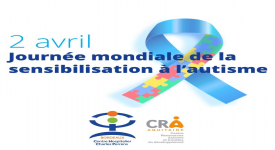Comparison of the efficacy of parent-mediated NDBIs on developmental skills in children with ASD and fidelity in parents: a systematic review and network meta-analysis
BMC Pediatr. 2024 Apr 25;24(1):270. doi: 10.1186/s12887-024-04752-9.
ABSTRACT
BACKGROUND: Recently, studies on behavioral interventions for autism have gained popularity. Naturalistic Developmental Behavior Interventions (NDBIs) are among the most effective, evidence-based, and widely used behavior interventions for autism. However, no research has been conducted on which of the several NDBI methods is most effective for parents and children with autism spectrum disorders. Therefore, we conducted a network meta-analysis to compare the specific effects of each type of parental-mediated NDBI on children's developmental skills and parent fidelity.
METHODS: PubMed, Embase, Cochrane Library, Medline, Web of Science, China National Knowledge Infrastructure (CNKI), CINAHL, and Wanfang databases were searched from inception to August 30, 2023. A total of 32 randomized controlled trial studies that examined the efficacy of different NDBIs were included.
RESULTS: Parents of children with ASD who received Pivotal Response Treatment (PRT) reported significant improvements in their children's social skills (SUCRA, 74.1%), language skills (SUCRA, 88.3%), and parenting fidelity (SUCRA, 99.5%). Moreover, parents who received Early Start Denver Model (ESDM) reported significant improvements in their children's language (SMD = 0.41, 95% CI: 0.04, 0.79) and motor skills (SMD = 0.44, 95% CI: 0.09, 0.79). In terms of the efficacy of improving parent fidelity, the results showed that the Improving Parents as Communication Teachers (ImPACT) intervention significantly improved parent fidelity when compared with the treatment-as-usual group (TAU) (SMD = 0.90, 95% CI: 0.39, 1.42) and the parental education intervention (PEI) (SMD = 1.10, 95% CI:0.28, 1.91).There was a difference in parent fidelity among parents who received PRT(SMD = 3.53, 95% CI: 2.26, 4.79) or ESDM(SMD = 1.42, 95% CI: 0.76, 2.09) training compared with PEI.
CONCLUSION: In conclusion, this study revealed that parents can achieve high fidelity with the ImPACT intervention, and it can serve as an early first step for children newly diagnosed with ASD. It also showed that parent-mediated ESDM is effective in improving language and motor skills for children with ASD and can be used as part of the second stage of parent training. Parent-mediated PRT can also be used as a third stage of parent training with sufficient training intensity to further improve language, social, and motor skills.
PMID:38664754 | DOI:10.1186/s12887-024-04752-9




